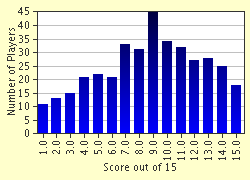Quiz Answer Key and Fun Facts
1. When was the *Austrian* Empire founded?
2. Which Habsburg emperor also ruled Spain and its new empire in the Americas, and also ruled the Netherlands?
3. In 1683 Vienna was besieged by the army of another imperial power. Which of these was it?
4. Which German state successfully challenged the leading position of the Habsburgs in Central Europe in 1740-63?
5. Only one woman has ever ruled Austria. Who was it?
6. In the Napoleonic Wars a combined Austrian and Russian army suffered a particularly devastating defeat at the hands of Napoleon. What was the battle called?
7. After the Napoleonic Wars the name of one Austrian politician (Foreign Minister, 1809-48 and also Chancellor, 1822-48) became a byword for political repression. Who was it?
8. In 1848, there were uprisings and (unsuccessful) revolutions in many parts of the Habsburg domains. In which region or country did the revolution prove hardest to suppress?
9. Until the rapid expansion of Budapest from about 1860 onwards, which place was regarded as the 'second city' of the Empire?
10. What was the most immediate result of Austria's defeat by Prussia in 1866?
11. When was the Austrian Empire transformed into the 'dual monarchy' of Austria-Hungary?
12. Which of the following psychologists was NEVER an Austrian citizen?
13. Austria-Hungary disintegrated at the end of World War I. Which completely new country was formed almost exclusively from former Austro-Hungarian territory?
14. When did the Nazis invade Austria?
15. When did Austria regain full sovereignty after World War II?
Source: Author
bloomsby
This quiz was reviewed by FunTrivia editor
gtho4 before going online.
Any errors found in FunTrivia content are routinely corrected through our feedback system.

